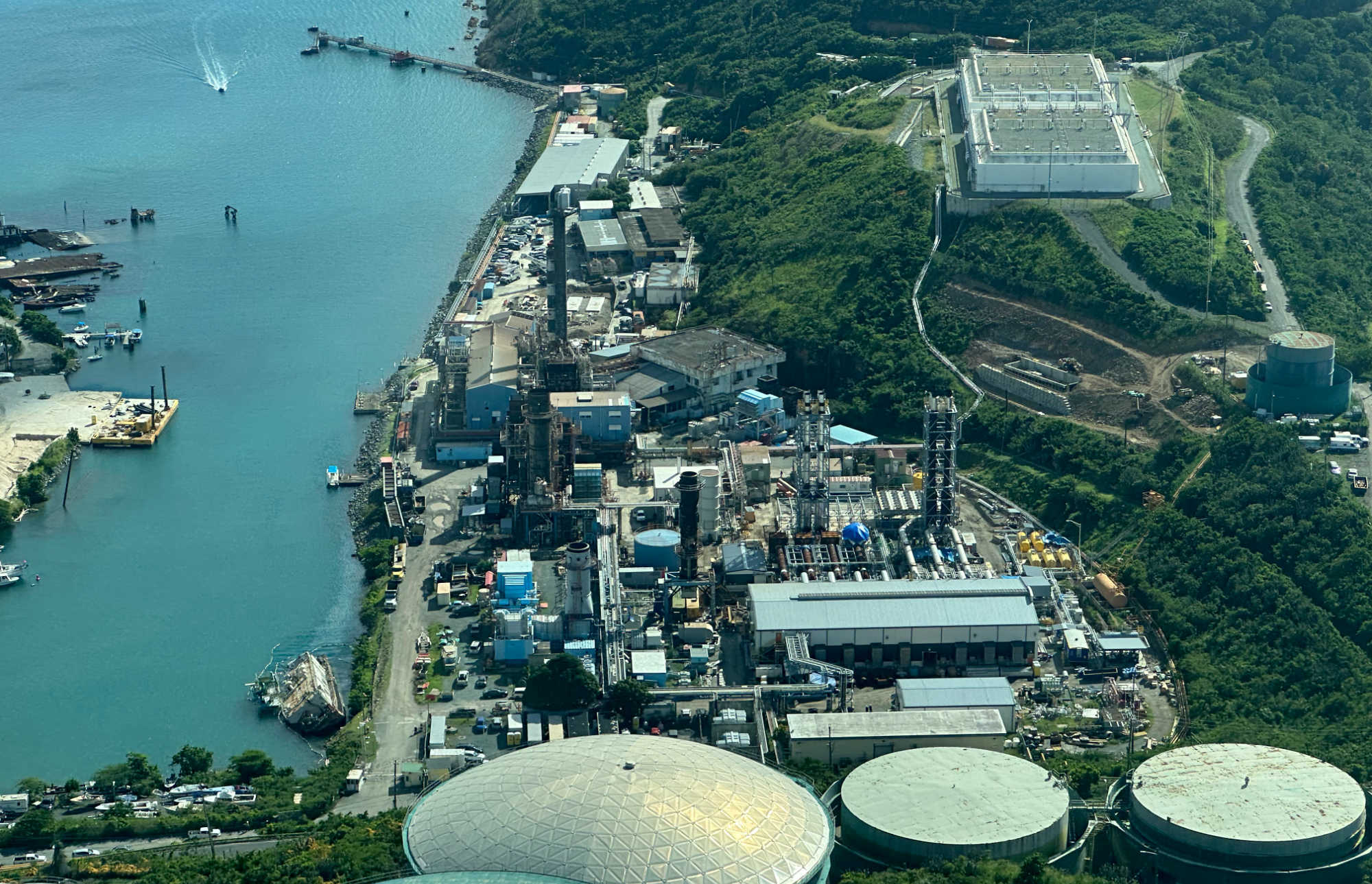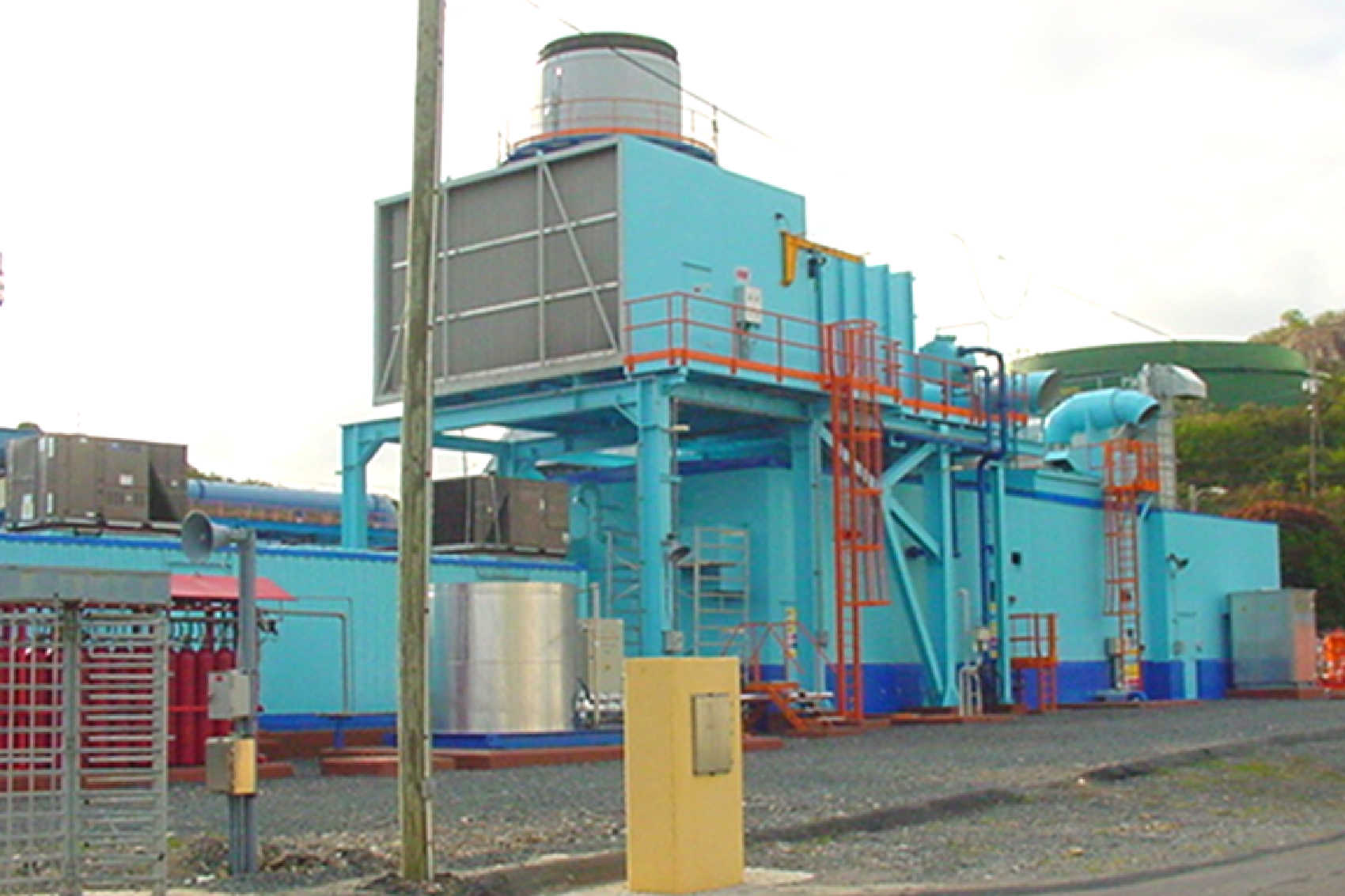WAPA
Power Outages Across Territory Caused By “A Lot Of Different Things,” CEO Andrew Smith Tells WAPA Board

As V.I. Water & Power Authority (WAPA) Executive Director Andrew Smith listed the contributing factors to the weeks of power outages and rotations in the territory, fans of children’s literature might have begun to recall the title of a series of books popular in the early 2000s – A Series of Unfortunate Events.
Mr. Smith explained to WAPA board members during a meeting on Thursday that “it’s not been one thing, it’s been a sequence of a lot of different things that have been causing these repeated outages.” The first in the sequence, Mr. Smith said, was the wave of “very heavy weather” that rolled through the territory approximately three weeks ago. “As a result of that, we suffered quite a few outages,” he said, noting that the Randolph Harley power plant had suffered a lightning strike during that period of stormy weather.
In that first week, WAPA also began to suffer from what Mr. Smith described as “nuisance trips” – when key equipment gets turned off by faulty sensors as part of wrongly-triggered failsafe mechanisms. Amidst the “nuisance trips”, WAPA also had to contend with a failsafe device in one of the Wärtsilä generators itself failing in a spectacular manner.
“There’s a disc that sits in the shaft of the generator between the generator and the engine,” Mr. Smith explained, noting that there are immense angular pressures being brought to bear on the spinning drive shaft. “There’s a coupling in there that’s designed [so that] when that torque exceeds certain limits, that coupling is designed to fail.” The loud noise that jolted St. Thomas weeks ago was the sound of that disc failing, Mr. Smith explained, who said that there was not actually anything wrong with the generator to trigger that dramatic failure. “We think it’s just a time of use failure that the part …disintegrated,” he told board members.
That was just the first week. As Mr. Smith continued to move through the timeline of events, he said that one of the units on St. Thomas “developed a leak in the propane supply valve to the plant.” As a result, Unit 15 had to be converted to operate on diesel, which caused the rate of WAPA’s diesel consumption to increase significantly. Having recently admitted to operating with smaller-than-comfortable fuel inventory stores due to financial constraints, WAPA faced the prospect of running out of diesel before the next scheduled delivery. While expediting the cargoes, “we had to do rotating outages during peak because unit 15 was not available,” Mr. Smith said. After the rotating outages at the end of the second week, the expedited delivery of diesel arrived, and WAPA was able to restore a steady supply of electricity to the territory.
This week, however, issues still persist. Unit 15 is still operating on diesel, as WAPA currently waits for the damaged propane valve to be repaired in New York and shipped back to the territory. “We think…starting early next week, we’ll get that back and put that in service,” Mr. Smith anticipated. On Wednesday, Unit 23, the largest on St. Thomas, tripped twice, causing islandwide outages. “Essentially, the match went out, if you want to think about it that way,” Mr. Smith told board members. After the unit tripped the second time, engineers discovered that the fuel filter had failed and collapsed inward, blocking the fuel supply to the plant.
Four inches of rain on Wednesday night did not help matters either, and as Mr. Smith spoke on Thursday morning, the power on St. John was out, with staff frantically trying to troubleshoot the underground transmission line that supplies the island. As Chief Operating Officer for Electric Systems Ashley Bryan later explained, water intrusions can cause “transient outages” at various points on the distribution system as the liquid seeps into spaces and disrupts the flow of electricity.
Asked to address the issue of maintenance, which Mr. Smith agreed accounts for several of the issues experienced in recent weeks, he said that “everybody knows” about WAPA’s chronically strained financial position. Explaining that gas turbines are supposed to go through a major maintenance overhaul every two years, he disclosed that “our generators are anywhere from seven to 12 years past due for major maintenance overhauls.” Basically, “we don’t have the funds to do major maintenance for all of the units right now,” Mr. Smith declared.
What WAPA is trying to do, the CEO said, is to perform some level of assessment on the units. Noting that an outside vendor recently evaluated Unit 27, Mr. Smith said that these assessments would be used “to understand what we need to do,” in terms of maintenance work on the units. WAPA is also scheduling preventative maintenance tasks that can be done without requiring the full major maintenance procedure. Mr. Smith said the company has been using the unfortunate occurrence of outages to have a secondary team perform these minor maintenance tasks while the main team works on restoring the generator to service.
Adding to the fragility of a grid that relies on poorly maintained generating equipment for its supply of power, Mr. Smith said heat is also a compounding factor. High ambient temperatures make it more difficult for transformers, which themselves generate heat, to stay within specified operating temperatures. Additionally, hot days create more demand on the system, as consumers fire up fans and air conditioning units to beat the heat.
Even with excellent weather and properly maintained units, WAPA’s maximum uptime can never reach the 99.9% reliability touted by some stateside utilities. As Mr. Smith explained, WAPA does not have a lot to buffer it against shocks. “We’re essentially in some instances a single redundancy utility. In some instances we’re a double redundancy utility,” he said, contrasting that with the triple redundancy systems operated by utilities on the mainland. Additionally, the Virgin Islands’ tiny consumer market means that an outage on one generator represents a significant loss of overall generation capacity, as opposed to a grid which may contain thousands of generators, depending on the market.
To solve the fragility problem, Mr. Smith said that WAPA should become proactive about vegetation management. “We need to trim trees, we need to clean the lines and all of that.” Keeping a larger inventory of spare parts is also crucial. “We need to be able to drive to the warehouse and go pick up a spare for 95 or 99% of the equipment that we have, and we just don’t have that,” Mr. Smith lamented.
However, the main task to be accomplished is major maintenance for all the generators. “They absolutely need to be opened up,” Mr. Smith said. However, at costs of around $2 million, which may increase up to $5 million for the larger units, WAPA must grapple with the perennial question of where the money will come from.
WAPA
Restoration Achieved: WAPA Unit 23 Back Online, Rotational Outages End in STT/STJ

The Virgin Islands Water & Power Authority (WAPA) announced late Wednesday that Unit 23, which had been out of service and causing rotational outages across the St. Thomas and St. John (STT/STJ) district, is now operational following successful repairs. This development has brought an end to the recent schedule of rotational outages in the area.
The restoration of Unit 23 was made possible by the dedicated efforts of WAPA’s plant personnel, who managed to install a replacement transducer, thereby restoring the unit to full functionality. This repair marks a significant step towards stabilizing the power supply for residents and businesses that have been adversely affected by the outages.
WAPA expressed gratitude to the community for their patience during this challenging period, acknowledging the hardships and inconveniences caused by the power interruptions. The authority highlighted that their team, made up of local community members who were also impacted by the outages, worked with diligence and urgency to ensure the repairs were carried out safely and efficiently.
“We want to emphasize that the WAPA team is comprised of community members who were also impacted by these outages,” the statement read. “This process was not taken lightly, and we worked with great urgency while also safely conducting repairs.”
This announcement follows WAPA’s recent successful repairs to Feeder 13, which resolved issues stemming from a damaged underground cable.
WAPA
WAPA Completes Feeder 13 Repairs; Rotational Outages Persist Due to Offline Unit 23

The V.I. Water and Power Authority (WAPA) has successfully repaired Feeder 13, resolving issues from a damaged underground cable. This extensive repair effort, completed last Friday evening, has brought relief to numerous customers in the St. Thomas-St. John district.
Despite this progress, challenges remain as Unit 23 is still offline, necessitating ongoing rotational power outages. These outages affect various feeders, contributing to the region’s power instability.
The Feeder 13 repair involved WAPA’s line department, transmission, and distribution teams, along with contractors Haugland VI and F&R Electric. They conducted a meticulous inspection and testing of the approximately five-mile-long cable, including a two-mile underground segment with 29 manholes. This process was essential to pinpoint the fault location and execute necessary repairs, according to a WAPA release.
The repair process faced challenges, particularly heavy rainfall last week, which required pumping water from manholes and prolonged the preparatory phase. WAPA utilized a fault indicator system to narrow down potential causes and streamline the repair process.
“We sincerely understand the major inconvenience this situation caused and assure you that crews were committed to quickly and safely restoring power,” stated WAPA.
Concurrently, WAPA faced additional challenges as Unit 23 at the power plant went offline last week for testing, leading to unexpected rotational outages. Customers on Feeders 6A and 7A experienced intermittent two-hour service interruptions due to the reduced generation capacity.
As of Monday, WAPA reported that the Wartsila Phase 1 Unit 3 has completed regular maintenance and is back online, helping to alleviate the generation shortfall. However, an updated rotational outage schedule remains in effect for the St. Thomas-St. John district until Unit 23 is fully operational again. WAPA plant personnel are exploring two potential solutions to expedite the return of Unit 23, including acquiring a new Megawatt transducer.
WAPA
PFA Selects Ernst & Young for WAPA Turnaround Management

The Public Finance Authority (PFA) has appointed Ernst & Young (E&Y) to manage the turnaround of the Water and Power Authority (WAPA). This decision emerged from an emergency PFA meeting on Wednesday, where the board unanimously agreed to E&Y’s proposal following an executive session reviewing four bids.
Lorelei Farrington, PFA’s staff counsel, detailed that an evaluation committee comprising PFA and WAPA representatives had meticulously reviewed the proposals earlier this year. The most expensive bid was discarded due to its significantly higher cost. The remaining proposals were assessed on project understanding, approach appropriateness, project plan effectiveness, and overall value.
“Based on the results of that evaluation, the committee recommends that a contract for the turnaround management services be awarded to Ernst & Young,” said Ms. Farrington. She highlighted E&Y’s extensive experience in addressing financial and operational distress and their broad capabilities in restructuring and turnaround practices.
E&Y’s existing relationship with WAPA positions them uniquely to provide further insights into the turnaround process. At an estimated cost of $450,000, E&Y’s proposal was the most economical among the bids, which ranged from $450,000 to $9 million.
The turnaround project is structured into three phases:
- Phase One: An initial assessment of WAPA to be completed within 120 days, resulting in a report for the legislature and governor on the authority’s financial status. This phase includes data collection on WAPA’s programs and projects, energy plans, debt consolidation, water quality, and service improvement plans.
- Phase Two: A 60-day period to submit a report detailing short-term measures to reduce the LEAC, recommendations for base rate reductions over 24 months, and strategies for incorporating renewable energy and reducing fossil fuel dependency over five years. It also involves organizational restructuring, debt management, and ensuring reliable water quality standards.
- Phase Three: Implementation assistance for all recommendations from phase two.
Board member Dorothy Isaacs expressed skepticism about spending more funds on WAPA without guaranteed improvements but ultimately supported the contract as a “final last-ditch effort” to resolve ongoing issues. The board approved a contract extension to E&Y, not exceeding $500,000.
PFA board chair Governor Albert Bryan Jr. noted that legislative mandates necessitated this move. Despite initially vetoing the legislation, which was later overridden, Governor Bryan now views this initiative as a positive step. “In retrospect, I think it will be a valuable tool,” he stated, acknowledging the complexity and unknown challenges within WAPA that the report aims to clarify.
The governor also appreciated the legislature for pushing this directive, despite it being an unfunded mandate from the 35th Legislature.
-

 Education1 year ago
Education1 year agoEducation Board Seeks Input on Schools Through Comprehensive Survey
-

 Education2 years ago
Education2 years agoCTE Board Enthusiastic About New Curriculum Standards, Yet Anxious Over Apprenticeship Support
-

 Crime2 years ago
Crime2 years agoRegistered Sex Offender Detained for Illegal Firearm Possession During Annual Surveillance Drive
-

 Videos3 years ago
Videos3 years ago2022 Gubernatorial Election: Voters Speak Out
-

 Development1 year ago
Development1 year agoCosts Surge as Donoe Estates Housing Project Resumes with New Contractor
-

 Videos3 years ago
Videos3 years agoGubernatorial Teams Celebrate St. Croix’s Bull & Bread Day
-

 Videos3 years ago
Videos3 years agoWakanda’s Female Might: A Dive into ‘Black Panther: Wakanda Forever’
-

 Crime2 years ago
Crime2 years agoSt. John’s Westin Resort Scene of Armed Robbery, Prompting Heightened Police Vigilance




